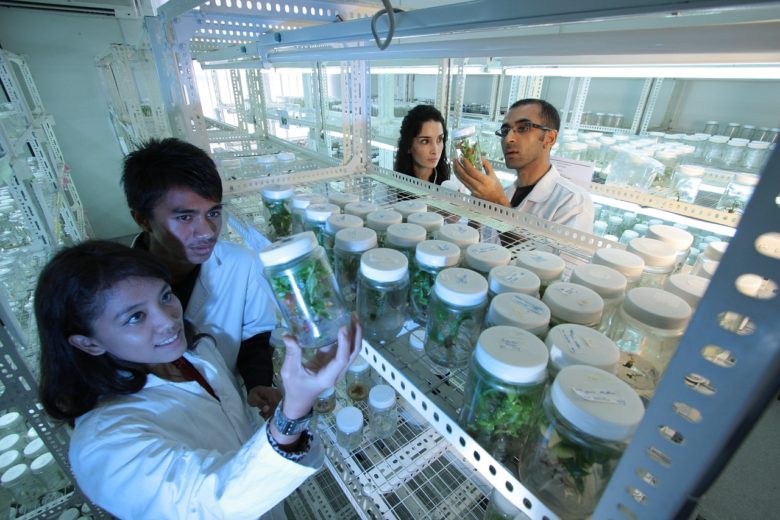
What Is Agtech and Why Should Farmers Be Investing in It
We are reader-supported. When you buy through links on our site, we may earn affiliate commission.
Agriculture is one of the main sectors where automation is becoming more prevalent. From driverless tractors to robotic strawberry harvesters, technology is changing farming. The debate over whether this new tech is good or bad wears on. One thing is certain, though — as the planet faces new challenges posed by extreme weather, climate change and a growing population, agtech will only continue to grow more popular. The best thing for farmers to do, then, is invest in it.
What Is Agtech?
Agtech is a relatively new industry that applies modern technology to agriculture. It also encompasses diverse solutions to steps within the food production process. This industry can be broken down into three subcategories — tech-assisted farming, new farming and revolutionary farming.
Tech-assisted farming is the most obvious component of agtech. This specifically refers to the application of technology to improve farming techniques. These may include water management systems, soil analytics, drones and robots, and predictive analytics like weather forecasting. These advanced devices and methods allow for more precise, reliable, efficient food production and more profitable farming. Additionally, they allow farmers to use minimal quantities of fertilizers and pesticides, keeping food prices down and reducing their impact on natural ecosystems.
New farming refers to the application of technology to develop new and improved farming techniques. This may include vertical farming, hydroponics or aerofarms. These systems allow farmers to grow crops with little to no water, soil or sunlight. Another example of new farming is aquaponics, where fish grow in indoor ponds and produce waste that acts as a food source to neighboring plants. The plants also purify wastewater to use in the ponds. These new techniques allow farmers to conserve their resources and money while still enjoying a bountiful, healthy crop. The third category involves revolutionary farming, which is the development of technology to create new agricultural products.
For instance, scientists are now using CRISPR-Cas9 gene editing to improve agriculture, like engineering crops that need less water and pigs that resist viruses and produce leaner meat. Revolutionary farming will continue to change the way farmers breed animals and grow plants, and you’ll likely see more genetically modified agricultural products hitting the market in the future.
Why Should Farmers Invest in It?
Modern technologies are continuing to increase the efficiency and yield of farms. Many investors are beginning to realize the long-term effects are well worth the investment. Agtech investment spending has increased sixfold within the past six years, with investors ranging from venture capital firms to individuals. Moreover, since 1948, these innovations have increased U.S. agricultural growth by 170%. Meanwhile, input costs have remained nearly unchanged, and labor costs have decreased by 24%.Historically, major corporations have played the biggest role in the growth of agtech, spending billions on its research and development.
However, this has resulted in incredibly expensive solutions, technologies and systems that farmers simply cannot afford. For that to change, farmers must create their own fundraising community and slowly gain ownership over agtech advancements. By developing the new technologies themselves, farmers can shape the future of agriculture and food production processes. One way farmers can begin to do this is by crowdfunding capital.
By raising small amounts of money from multiple investors, they can fund their own community-based innovations that start on the farm. For example, Indiegogo, an equity crowdfunding site, allows individuals to invest as little as $100 in agtech. Sites like these make it much more feasible for farmers to regain control over the technology sector that backs their business.
Won’t the Robots Steal Our Jobs?
One of the main concerns farmers tend to have in the technology-driven world is that innovations will replace human labor and cause lower employment. Their worries aren’t exactly unfounded. The implementation of technology has resulted in job loss before. By the end of the industrial revolution, more than half of all Americas were farmers but, since then, the portion of agricultural jobs has fallen to just 1%. Innovations like tractors and machines were a primary reason for this shift, replacing most horse-drawn plows and manual laborers. So, while the rise of new technology reduced food and output costs and increased efficiency, it also allowed farmers to hire fewer workers.
Historically, this hasn’t led to mass unemployment or impoverished societies. Of those American workers replaced by electric machinery, roughly 48% found employment in other industries like food distribution and preservation. As farmers gain more control over agtech, more workers will transition into research and development. If farmers still fear that agtech will come for their jobs, they might rest easier knowing that technology will only ever be able to replace a maximum 60% of workers. Although automation can substitute for human tasks in some cases, often robots can only accomplish simple, repeatable duties. So harvesting crops, like vanilla and cacao, still require humans and relies on their ability to carry out complex tasks.
Agtech Returns to Its Roots
While most consider technology futuristic, some agtech advances are actually supporting more traditional farming methods. Large industrial farms often produce greenhouse gases, create toxic runoff and overuse the land. Regenerative farming techniques, like conservation tillage and crop rotation, are making a comeback — with the help of agtech, of course. Solar panels, for instance, can reduce irrigation costs and act as an extra source of revenue for farmers. Additionally, converting pastures into solar fields allows the earth to rejuvenate and replenish soil nutrients. If farmers convert these fields back to crop production, they’ll produce a larger, more sustainable yield.
Agtech is also supporting a new era of homesteading. People across the U.S. are buying land and moving to a more self-sufficient lifestyle, growing their own food and raising their own livestock. Agricultural innovation has made this easier than ever. Security cameras monitor gardens, and motion sensor floodlights ward off unwanted guests. Off-grid energy like micro hydropower generators, wind turbines and solar panels also allow homesteaders to live sufficiently and remotely if they so choose. Thus, agtech has more positive implications than farmers may have originally thought. From engineering better vegetables to lucrative crop rotation techniques, it has much to offer.
If farmers want to reap the benefits of these innovations, they must begin by investing in them. With farmers at the forefront of agtech development, they can craft a future that best suits their needs and, thus, the needs of the planet.
Share on
Like what you read? Join other Environment.co readers!
Get the latest updates on our planet by subscribing to the Environment.co newsletter!
About the author

Jane Marsh
Starting from an early age, Jane Marsh loved all animals and became a budding environmentalist. Now, Jane works as the Editor-in-Chief of Environment.co where she covers topics related to climate policy, renewable energy, the food industry, and more.





